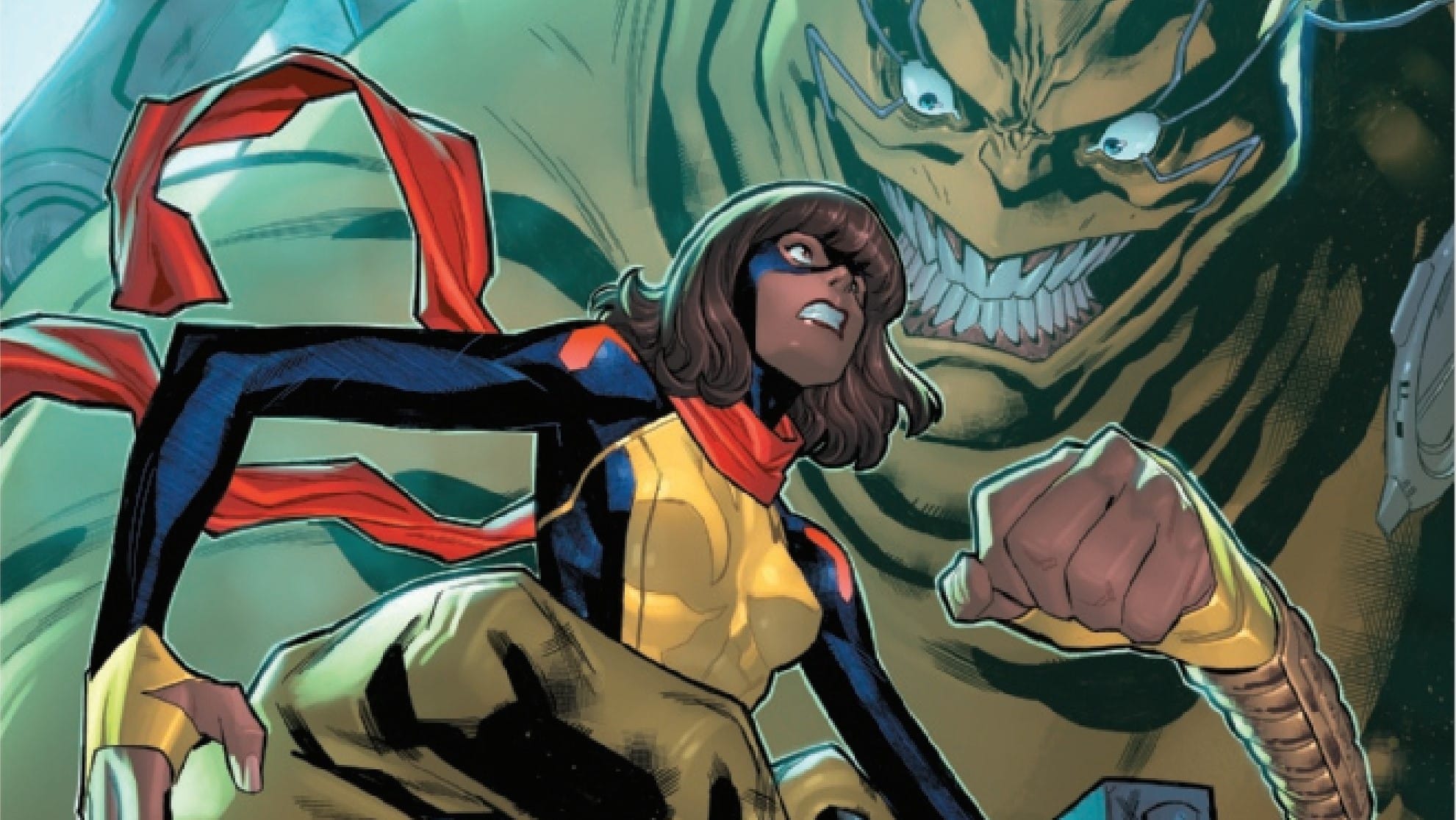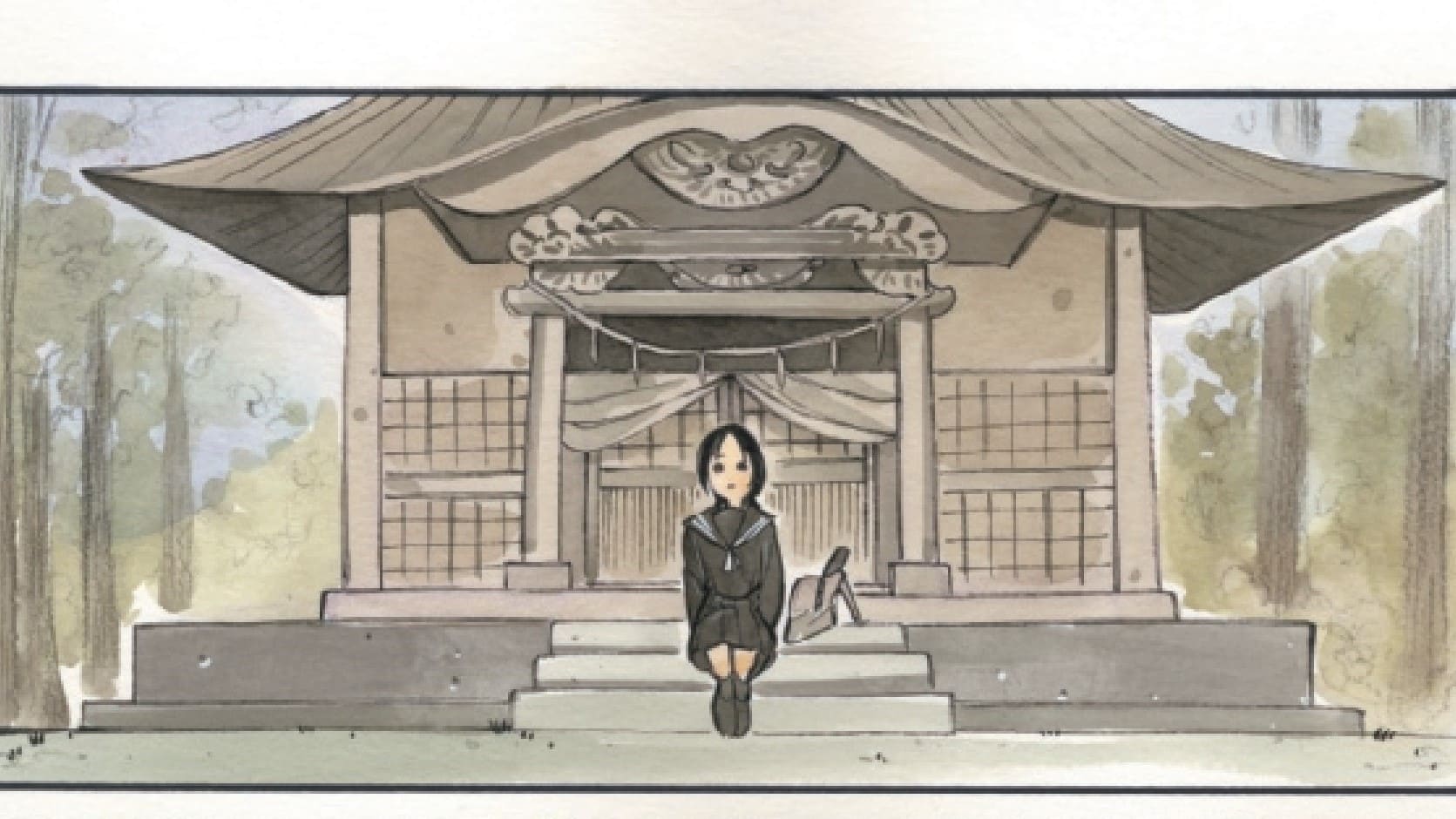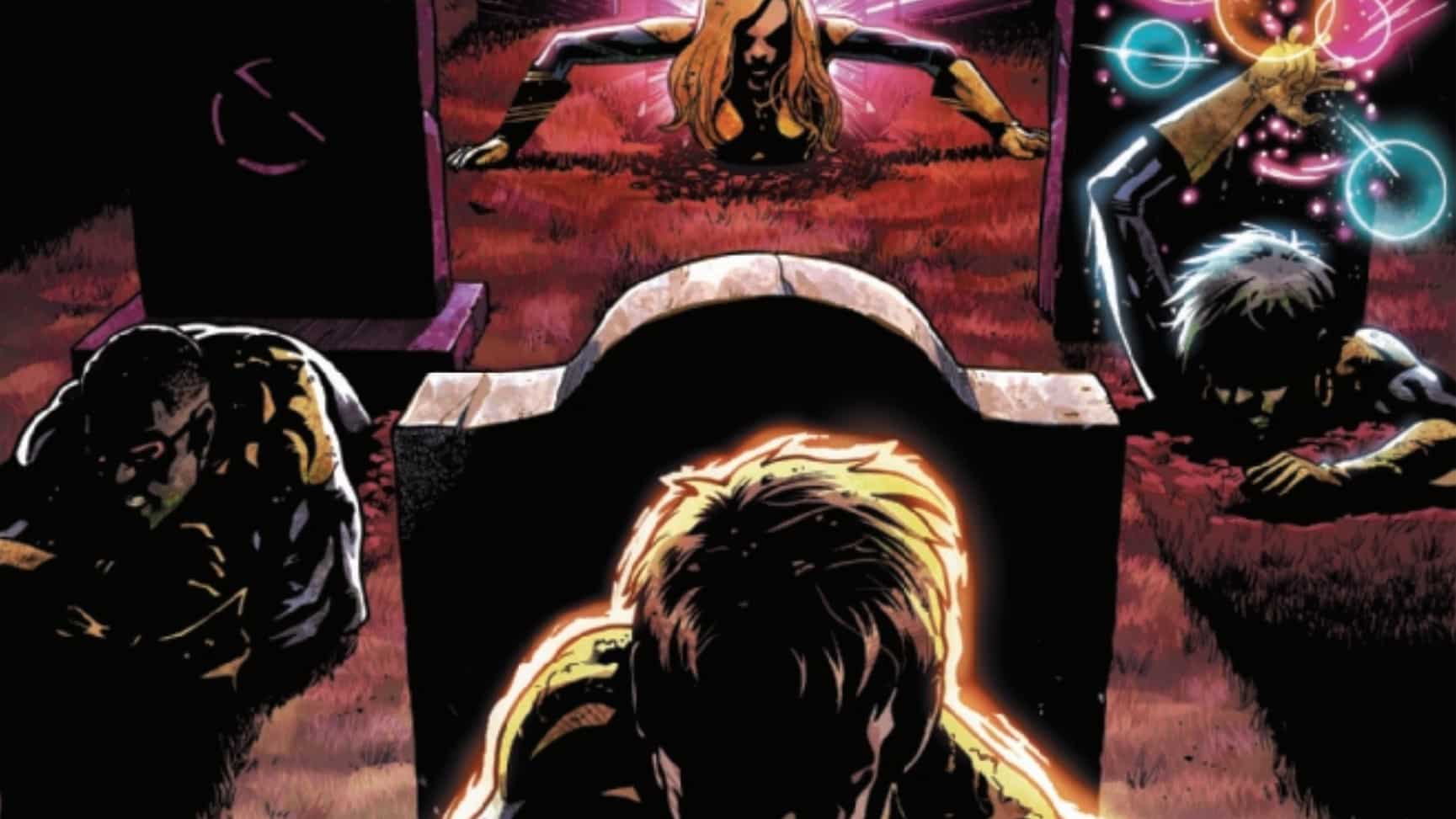Theft on an old-school riverboat! Big flirty eyes! Red irises! Flying playing cards! Adorable ‘Ro hanging out with a powerful grandma! Yep, it’s Gambit #4, written by Chris Claremont, drawn by Sid Kotian, colors by Espen Grundetjern, letters by Tom Orzechowski VC’s Clayton Cowles, although you could have fooled me.
Stephanie Burt: Austin, do you feel like Gambit #4 is exactly what we expected? Like Claremont and Kotian have settled into a groove? Are you having fun? I am, mostly. Did you crave novelty, though?
Austin Gorton: I am having more fun than this series probably deserves, frankly. The stakes are refreshingly low, Claremont is hitting some tropes (but in a good way — this is definitely one of the more low-key Modern Claremont Stories in that regard), and I’m really appreciating that while there is an overarching thread and dedicated supporting cast to this series, it’s not just telling one story across its five parts. Gambit #1 was its own thing, then there was finite story told in issues #2-3 that is carrying over into this issue, which will presumably pair up with Gambit #5 to finish the whole thing out. It’s retro in a good way, and makes the whole thing feel richer and more satisfying as a result.
You Don’t Own Me
Stephanie: Jewel heist in a casino is such a trope that I wanted to set this version next to other recent X-comics that picked up similar tropes: the Cordyceps Jones plot in recent issues of adjectiveless X-Men, the infiltration plot involving Benjamin Deeds in Christina Strain’s Generation X. Maybe that means there wasn’t enough meat here, or maybe it means I just like casino heist plots. Anyway this one looks great, literally looks great: high rollers distracted by Marissa’s charm, Remy sneaking around and climbing on parts of the ship he wasn’t supposed to reach. “It’s well past midnight before the epic game ends.”
Austin: Heist stories are always fun, and I like that Claremont is making a point to weave them into the narrative when, in the “main” series, Gambit and Storm’s predilection for thievery (understandably) got pushed aside once they rejoined the X-Men (aside from when they needed to call on it to get out of a jam, like Gambit in Uncanny X-Men 272). This series is a perfect vehicle for getting to see the pair operating as the thieves we were always told — but rarely shown — they were.
Stephanie: As much as I dig the letter-perfect late-1980s nostalgia flavor in Gambit #4, there’s one scene that plays just wrong, with the same wrongness that pops up in all the worst Gambit scenes. Remy surprises a well-dressed lady on an otherwise abandoned boat deck and introduces himself immediately as a thief who wants to steal her heart, and leans in for a kiss, and she’s not upset or freaked out or wary at all. She warns him that her heart lies beyond “temptation,” and he replies “the only thing I love more than a woman as beautiful as you is a challenge to match.” She’s apparently genuinely charmed, having fallen for this handsome stranger in the scope of about five minutes in the half-dark. Then he steals her necklace. I understand that early Gambit stories maintain some ambiguity as to whether he has pheromone powers or just preternatural charm, but if it’s the former, shouldn’t he know that he’s using them? If it’s the latter, I’m calling BS. Unless she turns out to be a disguised supervillain from space unaware of Earth ways, in which case all is forgiven.
Austin: This could be Claremont subtly winking at the briefly hinted at but ultimately abandoned “psychic charm” power of early Gambit, but it really just reads more like the usual (bad) trope of “this character is just so attractive they overwhelm all sense via their attractiveness,” which is fitting for the era this is trying to emulate but less so for the era in which it’s being published, which is unfortunate.
Stephanie: We’ve seen a lot of the pre-teen thief ‘Ro discovering her weather powers and her sacred status and learning the danger she’s in. We haven’t seen her just being a bratty pre-teen, until now, and I sorta love it. She doesn’t want to hear about Gambit’s “kissy-face” exploits, much less see any of them: she wants to hear about “the game,” i.e. the stealing. (Me too, young Ororo. Me too.)
If I’m not mistaken, and I’m mistaken a lot, early in his X-career Gambit wanted to prove that he was one of the good guys. He’s certainly working hard to prove that now: he swashbuckles, flirts, and steals from the rich, and gives the proceeds, very visibly, to the poor. So visibly and so fast that I found myself wondering where he could fence all those fancy jewels in such a short time. Maybe he knows some people in Memphis.
Austin: There definitely was a sense of Gambit wanting to prove himself a hero (even as he believed himself to be a bad guy, in true angsty 90s fashion), but I feel like that developed later, under Fabian Nicieza and Scott Lobdell. Claremont’s Gambit (for the short period of time he had to write him) was little more than a mysterious cipher (with Claremont originally planning to reveal him as a double-agent working for Mister Sinister to destroy the team from within). All of which is to say, going for a kind of modern day Robin Hood approach here isn’t wildly inconsistent with previously portrayals (from Claremont and otherwise), and certainly more a palatable angle for the character at this point in time (I’d have much less interest in watching Gambit and ‘Ro ply their trade if they weren’t giving back to people who need the money). Even if the expediency of the stolen-goods-to-cash pipeline is questionable.

I Love Rock and Roll
Stephanie: Remy certainly knows Lila Cheney. I have the feeling he’s there for her, much more than for her music: I just don’t see him as the world’s biggest punk and New Wave fan. I do see him driving all the way from the banks of the Mississippi to Huntsville, Alabama, which is at least a four-hour road trip. Austin, did he steal that sweet red car? It looks like the one he’s been driving all along. Maybe he parked it by the casino boat and the boat never sailed anywhere?
Austin: It sure seems like that riverboat is meant to be traveling down the river based on the way it’s drawn in the issue’s opening double page spread, (and from the way the characters seems to have changes of clothes and stay up all night gambling/thieving, suggesting it’s like a cruise that is going somewhere while its passenger live aboard it), but maybe it ends where it starts? Though it is, as you point out, a ways off the river that has given this story its narrative spine thus far, I am enjoying the way this series is becoming a travelogue of the American south as Gambit and ‘Ro journey from Illinois to New Orleans.
Stephanie: And here comes Lila in Huntsville, whose kissy-face reunion with Remy takes up most of a page. I’d pick up this comic just for this scene, to be honest: she’s aggressively flirty and he’s surprised and we’re not sure what’s happening next, since Remy’s newly serious squeeze Marissa stands right there watching, and I doubt they’ve had conversations about ethical non-monogamy, though maybe they should. And then Lila explains that she treats everyone like this, and Gambit’s like “What can you do?”
Austin: I hate to be a continuity pendant (haha just kidding, I live for it) but Lila’s presence and happy-go-lucky demeanor is something of an odd fit for where Gambit #4 fits into her chronology. When last we saw Lila, she was believed dead (by the New Mutants) following an encounter with the alien Spyder, the culmination to an interminable Louise Simonson-penned story that culminated in New Mutants #70 (it’s the one that introduced Gosamyr; you all remember Gosamyr, right?). When we next see Lila, it is in some subplot pages in Uncanny X-Men #269, in which she’s being hunted by the mysterious Shi’ar Strike Lord and resolves to seek out the X-Men for help (which she does in Uncanny X-Men #273). The implication seems to be that the encounter with Spyder led her to end up wherever she is in Uncanny #269, alone and isolated.
The idea that in between those events she simply returned to Earth (and to touring) to flirt with Gambit and fight a bounty hunter isn’t necessarily a contradiction, but it does seem like a contradiction in tone that doesn’t lead into her later Uncanny plotline as smoothly as the original, “turns out she’s not dead after all,” transition did.
That said, it’s always nice to see Lila.
Stephanie: Again, Papa Claremont has given Sid Kotian enough to work with and Kotian runs with it. Kotian really, really likes the effects you get from drawing thin squiggly irregular lines all over a deep-color background in a warm color like pink or magenta. It appears in Remy’s hero costume and Lila’s top. She’s also got a vintage wedge haircut and ankle boots and a pink leopard print skirt, and I love that look — I would wear that look if I could! — but it does not quite strike me as Lila Cheney: it’s less punk than floufy New Wave, less Joan Jett than Clare Grogan. I’d kill to resemble Clare Grogan, but I’m not sure that my image of Lila would.
Meanwhile ‘Ro and grandma-doctor-wisdom-provider Gabby hang out in white space learning to use the powers they’ve both been granted by a protector goddess, i.e. they duel with astral fire. Neither of them especially wants to fight, but ‘Ro knows it’s practice, and she likes practice. Gabby, not so much. Austin, meh?
Austin: Pretty much, yeah. I’m sure Claremont is going somewhere with all this stuff about ‘Ro and Gabby on the Astral plane, but it remains the least interesting facet of the series for me. Claremont has given Marissa a moderately interesting hook via her whole, “wants to be a superhero despite not having powers,” thing, but thus far Gabby falls somewhere between a non-character that gives ‘Ro someone to talk at and a collection of tropes/clichés. And there’s plenty to explore with ‘Ro at this time already without delving back into the Ashaké stuff.
Stephanie: Given how much other Claremont comics tell us about airplanes, spaceships and the space program, I found myself wanting more NASA and more space science in Claremont’s version of Huntsville. At least we see rockets and gantries in the background, as the set for Lila’s show. Austin, did you see anything else especially spacey about this locale? And do you still think we’re gonna end up in New Orleans?
Austin: Maybe it’ll tie more into the climax next issue, but I was also bummed by the lack of Claremontian aviation lore given the setting. I guess he was just looking for a space setting to serve as the backdrop for Bounty coming into the A-plot, and Huntsville made more geographic sense than sending Team Gambit to Cape Canaveral or Houston.
As for New Orleans, we’re heading there one way or another simply by dint of that being where Gambit and ‘Ro’s story picks up after the gap in Uncanny X-Men #267 in which this series takes place. The question of whether or not they get there next issue probably comes down to whether or not Claremont wants to leave an opening for a subsequent mini set in this same time period.

Bad Reputation
Stephanie: I had enough fun on the boat and at the show and navigating Remy’s growing romance with Marissa that I found myself feeling disappointed when the supervillains popped in. But you can’t have a comic of this kind — certainly not a retro comic — without them. So here they are. As Bounty drops in to capture Lila, and pinstriped, small-time, would-be real estate oligarch Solanz meets… um, Austin, who are these people? I’m stumped. Stumped I am. One of them talks like Yoda but in horror font. Another glows white and wears a Kirby hat. I assume they are rarely-used villains co-created by Claremont in a non-X title, either in the 1970s or else in the 1990s. Austin, help?
Austin: I wish I could, but these guys are ciphers to me as well. It’s possible they popped up in Claremont’s brief Fantastic Four run (which is where Bounty hails from) or maybe I’m forgetting something from his later returns to the X-Men, but as far as I know, these are new creations. Who, to your point, go unnamed. All we know is they are bounty hunters out to get… Bounty.
Stephanie: ‘Ro’s been watching Gambit as his equivalent of a Spidey-sense — flirty-sense? Cheesy-sense? — keeps tingling: he’s alert and distracted and she resolves to protect him even when he won’t tell her squat as to why he’s on edge. I like that beat. It looks forward to the adult Ororo’s difficulty sharing her negative feelings and her unease, because she’s supposed to be in charge.
The big goofy fight, however, sets Gambit against Bounty. It’s… fine. It’s fight choreography, with ankle grabs and turns and fair play and chances for Remy to use his long white staff. And he wins the fight!
Austin: I too thought the fight was perfectly cromulent. Gambit’s whole “neural lock” technique (in which he flips over Bounty and punches her in the back in such a way that it briefly paralyzes her?) seems little deus ex machina-y, and there’s a bit where Gambit is suddenly holding his staff again after a cutaway that seems like an art error which Claremont clumsily covers with a bit of dialogue, but for the most part, Kotian handles the choreography well enough, keeping everything in a sort of medium zoom that gives the action room to move while keeping what is going on clear.
Stephanie: Meanwhile (lots of “meanwhiles” in Gambit #4) Marissa returns from deep space, where her new friend Lila has taken her to get her very own superhero costume made: boob-tastic armor in three shades of purple and pink, with gloves resembling Iron Man’s. Nothing wrong with it, but maybe the Kotian imagination ran more to civilian clothes this time out.
Austin: Marissa’s new armor is, by design, a riff on Gambit’s pink armor, but the big problem with the design is that Gambit looks like a doof in it whenever he loses his trenchcoat. And Marissa does not receive a trenchcoat with her armor.
Stephanie: Claremont, on the other hand, has been thinking about what makes a good superhero costume for a long time: that means coverage and body shape and aesthetics, but it also means materials. We got a quick speech last issue about how hero costume materials protect you against bullets, but not so much against fist punches and blade wounds. Apparently Solarz overheard that speech, because… Austin, can we give away the ending? And: would you consider it fridging? I’m not sure.
Austin: Our big issue-ending cliffhanger is Solarz stabbing Marissa through her new armor. I’d say we table the fridging discussion until we learn if Marissa is dead dead, or just issue-ending cliffhanger dead. I like this character well enough, but I’m not sure the question of her fate is the compelling drive to find out what happens next that Claremont thinks it is. That said, it is certainly fitting with the series’ old school vibe, and I am nevertheless excited to see how this all wraps up in the next issue.
Greeting Cards
- The old X-tradition of introducing young readers to real sites they might not have known continues this issue with aerospace city Huntsville. I want a map that shows exactly where Gambit and ‘Ro have gone. And maybe more Alabama geography.
- I have no idea where the mystic-powered doctor-grandma subplot will go, but I”m hoping that she turns out to be quietly crucial to the future Storm.
- Seriously, please label these gosh-dang villains in the same issue that introduces them, consistently. Use a text box if you must.
- Gambit received his pink armor from Lila Cheney (or at least with Lila as an intermediary). File that away for X-Men trivia night.
- I would also chide Claremont for dropping Lila back on Earth for a big concert, something New Mutant Cannonball, her boyfriend at the time, would certainly hear about and thus reveal to him that Lila survived well before he eventually learned that information anyway, except for the fact that no one ever really established when, exactly, Cannonball learned his one-time girlfriend survived.







